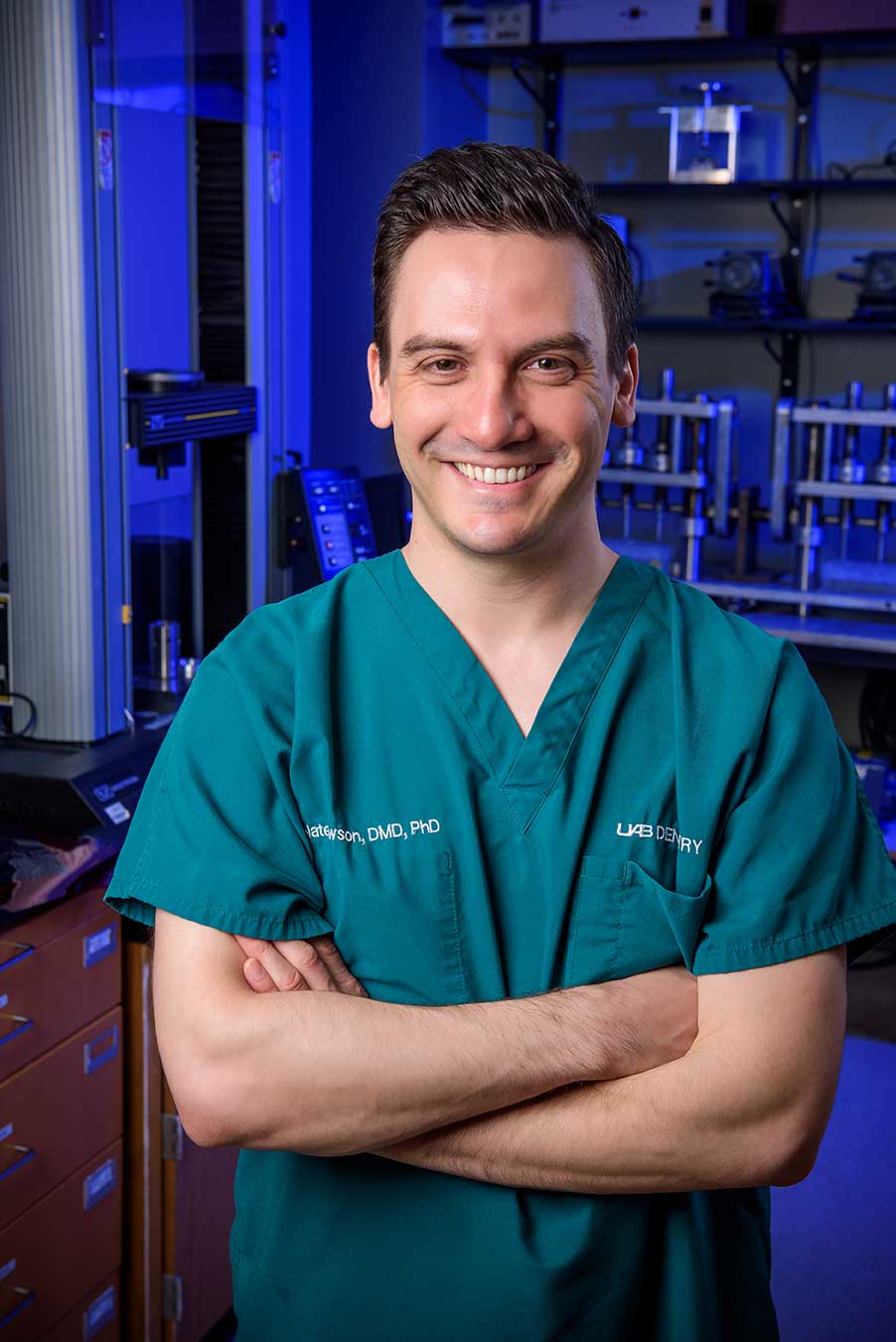A lot has changed in the dental industry since the days of George Washington’s dentures (which actually were made of ivory, not wood). Innovations and advancements have regularly taken place over the centuries, from the invention of the dental drill in the late 1700s to the creation of the modern nylon toothbrush in 1938.
 Dr. Nate LawsonUAB School of Dentistry Associate Professor Nate Lawson, D.M.D., M.A., Ph.D., takes a look at what the current century has brought the dental world so far, and what changes might be looming on the horizon.
Dr. Nate LawsonUAB School of Dentistry Associate Professor Nate Lawson, D.M.D., M.A., Ph.D., takes a look at what the current century has brought the dental world so far, and what changes might be looming on the horizon.
Q: What is one of the biggest advancements in dental materials in recent years?
Lawson: The new types of ceramics used to make dental crowns and bridges have become very popular. These ceramics are as strong or stronger than natural enamel. Dental zirconia, which started to be used in the early 2000s, is now a very common material for making dental crowns. Zirconia is so strong that you can hit it with a hammer and it will not break.
Also, patients have become increasingly aware of aesthetics. Many of them are hesitant these days to have anything metal in their mouth. That drove the initial demand for ceramic restorations, but originally the ceramics were not as strong as metal-based ones. These zirconia ones are as strong as metal, and they are tooth-colored. Plus, they don’t have the fabrication costs that metal does, so they’re not as expensive.
Q: Are there any drawbacks?
Lawson: Tooth-colored composite fillings don’t have the lifespan of the old metal-based amalgam fillings. The process of bonding them into the tooth is very difficult. So for patients who are prone to get caries, they tend to get new ones around the tooth-colored fillings. One common misconception from patients is that once a tooth is fixed with a filling or crown, that it will not be able to get new caries, when in fact it may be more likely to get new caries if the patient does not change hygiene and diet habits.
That’s where some of these more bioactive materials have come into the market. It’s a new type of material that releases the ions present in a natural tooth to help fight against the formation of caries around fillings and crowns. The filling material itself is not just a passive material. It can help strengthen the surrounding tooth and prevent it from getting a cavity.
Q: There still will be occasional cavities. Is there anything new in that regard?
Lawson: There is a treatment called resin infiltration. This is a technique in which very small cavities are treated without drilling. Instead, a clear resin is injected into the lesion, and it hardens. It can fix that very early-stage cavity without drilling and placing a filling. This works only for very small cavities, but in those cases, it can be beneficial to the patients.
Q: Are any of the new materials being tested at UAB?
Lawson: Yes. In fact, UAB is one of the few dental schools in the country with an active dental-materials testing facility. New materials are evaluated in our dental lab to look at their various properties. We have a two-year Master’s program in which dentists can learn the tests for evaluating dental materials. These students evaluate new materials and measure their relevant properties. All the materials tested in the program are developed by industry and typically already have FDA approval.
When new materials show good results, these products can often become incorporated into treatments performed by faculty, residents and students in the UAB School of Dentistry. For example, research conducted at UAB was some of the first to prove that zirconia, aside from being strong, is very friendly to the surrounding dentition.
Q: What is one of the more interesting things under development?
Lawson: There are some researchers who are trying to incorporate new components into toothpaste or mouth rinse that have small molecules that can stick to your teeth and prevent the attachment of bacteria. You can also put those kinds of molecules into filling materials, so bacteria won’t grow on your existing fillings. There is some research being done at UAB to help develop those small molecules.
Q: What trend are you most excited about in terms of future potential?
Lawson: Digital has really come on board. It used to be that if you had a crown or nightguard made, they would take an impression of your mouth essentially using a goo. But now there is digital scanning, where they put a scanner in your mouth and get a 3D model of your teeth. That has become much more common.
There are so many different things we can do with that. We can make crowns, bridges, nightguards and even dentures. And there might be some different applications. Maybe take a 3D image every five years to tell if teeth are wearing down or if the gums are receding. We’re still figuring out how we’re going to use digital dentistry in more ways. That’s a big thing coming on the horizon.
For more on Dr. Lawson and our other experts, visit UAB News Experts in Dentistry.